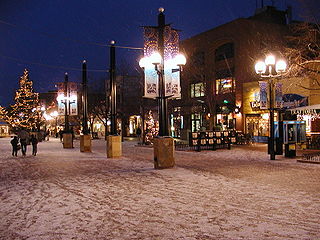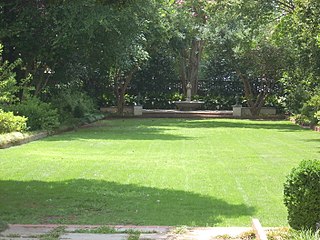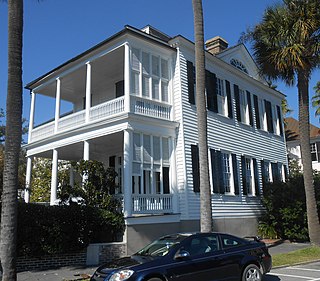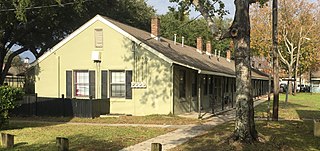Loutrel Winslow Briggs (December 12, 1893 - May 1977) was an American landscape architect active in Charleston, South Carolina.

A landscape architect is a person who is educated in the field of landscape architecture. The practice of landscape architecture includes: site analysis, site inventory, land planning, planting design, grading, storm water management, sustainable design, construction specification and ensuring that all plans meet the current building codes and local and federal ordinances. The title landscape architect was first used by Frederick Law Olmsted, the designer of New York City's Central Park.

Charleston is the oldest and largest city in the U.S. state of South Carolina, the county seat of Charleston County, and the principal city in the Charleston–North Charleston–Summerville Metropolitan Statistical Area. The city lies just south of the geographical midpoint of South Carolina's coastline and is located on Charleston Harbor, an inlet of the Atlantic Ocean formed by the confluence of the Ashley, Cooper, and Wando rivers. Charleston had an estimated population of 134,875 in 2017. The estimated population of the Charleston metropolitan area, comprising Berkeley, Charleston, and Dorchester counties, was 761,155 residents in 2016, the third-largest in the state and the 78th-largest metropolitan statistical area in the United States.
Briggs was born in New York City, graduated from Cornell University in 1917 with a degree in "Rural Art" (landscape architecture), and chaired the department of landscape architecture at the New York School of Fine and Applied Art. In the 1920s he began a seasonal landscape architecture practice in Charleston catering to wealthy New Yorkers who wintered in the area. His first major commission was in 1929 for Mrs. Washington Roebling, widow of the engineer who supervised construction of the Brooklyn Bridge. In 1951, Briggs published a book, "Charleston Gardens," about the private gardens in Charleston, South Carolina. [1]

The City of New York, usually called either New York City (NYC) or simply New York (NY), is the most populous city in the United States. With an estimated 2017 population of 8,622,698 distributed over a land area of about 302.6 square miles (784 km2), New York is also the most densely populated major city in the United States. Located at the southern tip of the state of New York, the city is the center of the New York metropolitan area, the largest metropolitan area in the world by urban landmass and one of the world's most populous megacities, with an estimated 20,320,876 people in its 2017 Metropolitan Statistical Area and 23,876,155 residents in its Combined Statistical Area. A global power city, New York City has been described as the cultural, financial, and media capital of the world, and exerts a significant impact upon commerce, entertainment, research, technology, education, politics, tourism, art, fashion, and sports. The city's fast pace has inspired the term New York minute. Home to the headquarters of the United Nations, New York is an important center for international diplomacy.

Cornell University is a private and statutory Ivy League research university in Ithaca, New York. Founded in 1865 by Ezra Cornell and Andrew Dickson White, the university was intended to teach and make contributions in all fields of knowledge—from the classics to the sciences, and from the theoretical to the applied. These ideals, unconventional for the time, are captured in Cornell's founding principle, a popular 1868 Ezra Cornell quotation: "I would found an institution where any person can find instruction in any study."

Washington Augustus Roebling was an American civil engineer best known for supervising the construction of the Brooklyn Bridge, which was initially designed by his father John A. Roebling. He served in the Union Army during the American Civil War as an officer and was present at the Battle of Gettysburg.
Briggs is now best known for more than one hundred gardens that he designed in or near Charleston's historic district. He was also landscape architect for Mepkin Abbey.
Mepkin Abbey is a Trappist monastery in Berkeley County, South Carolina. The abbey is located near Moncks Corner, at the junction of the two forks of the Cooper River northwest of Charleston, and is located in the Diocese of Charleston.












